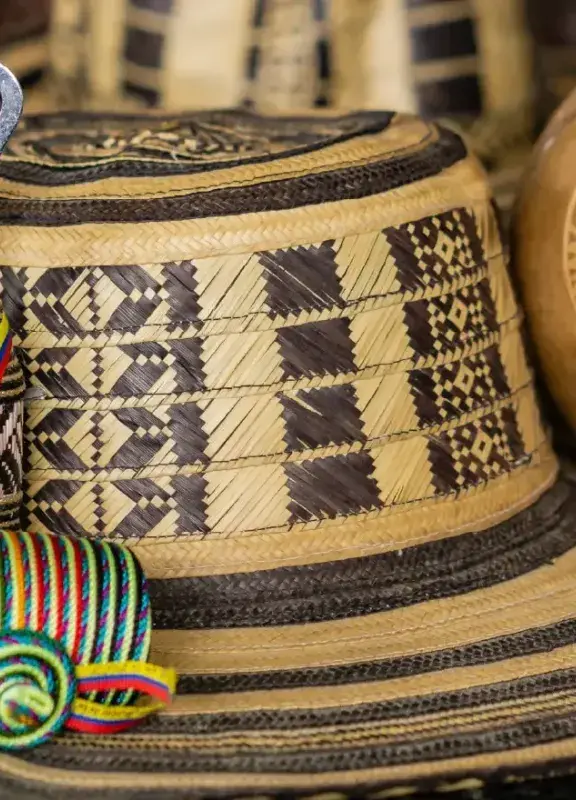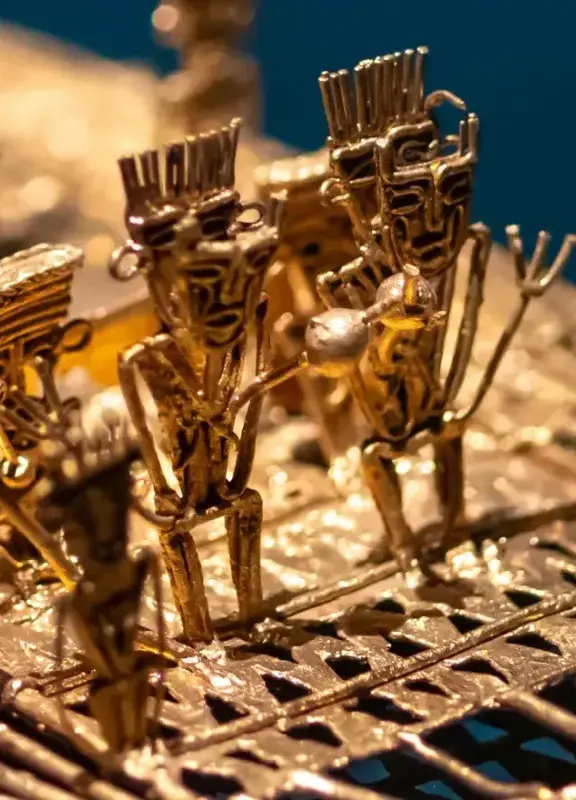San Basilio de Palenque, the first free African town in the Americas
Colombia is home to the first free town in the Americas, founded by maroons who escaped slavery during the colonial era. It is a unique place, frozen in time, famous for its culture, language, cuisine, and history.
The screens around the world showed his body lying on the ground. Alfonso ‘Peppermint’ Frazer was no longer the world champion of boxing. Meanwhile, Antonio Cervantes, known as ‘Kid Pambelé’, landed a precise uppercut that crowned him the new world champion. Where was the fighter from? He was a native of San Basilio de Palenque and seemed a close descendant of Benkos Biohó, that strong and fierce runaway slave who achieved freedom for his people during colonial times.
San Basilio de Palenque, a corregimiento of the municipality of Mahates, is officially the first free town in America. On the waters of the Magdalena River, voyages of boats loaded with Africans were common. Due to a shipwreck, the then slave Domingo Benkos Biohó was able to escape along with several of his peers. Very close to the Serranía de San Jacinto, they established routes to fight battles and free enslaved Black people from Cartagena and the surrounding vessels. This was to bring them to their stronghold, founded in the year 1603. The colonizers were their ‘Peppermint Frazer’, to whom they managed to deliver a precise blow.
San Basilio de Palenque, a treasure of the Colombian Caribbean
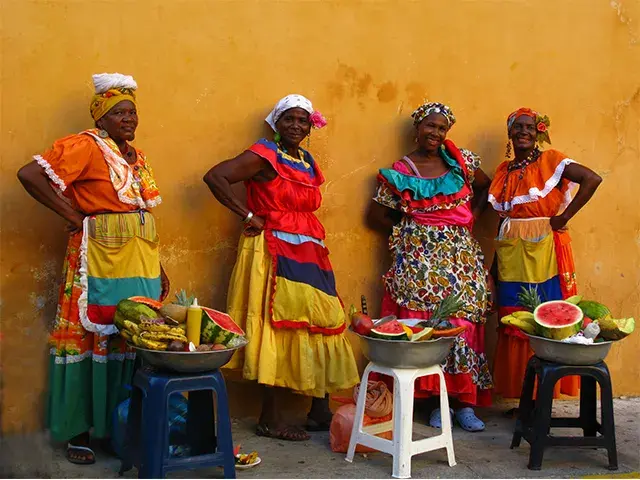
More than 200 years before Colombia gained independence from Spain, the free lands of San Basilio de Palenque were founded. In 1603, a peace capitulation was signed between the runaway slaves and the Spaniards. Years later, in 1713, the Spanish Crown issued the Royal Decree declaring that palenque free from slavery. Eventually, in 2005, the place was declared a Masterpiece of the Oral and Intangible Heritage of Humanity by UNESCO, since fortunately its culture and African traditions have been preserved intact over time. A unique place in the world, where gastronomy, language, music, culture, medicine, and social organization have their own significance.
A paradise for the senses
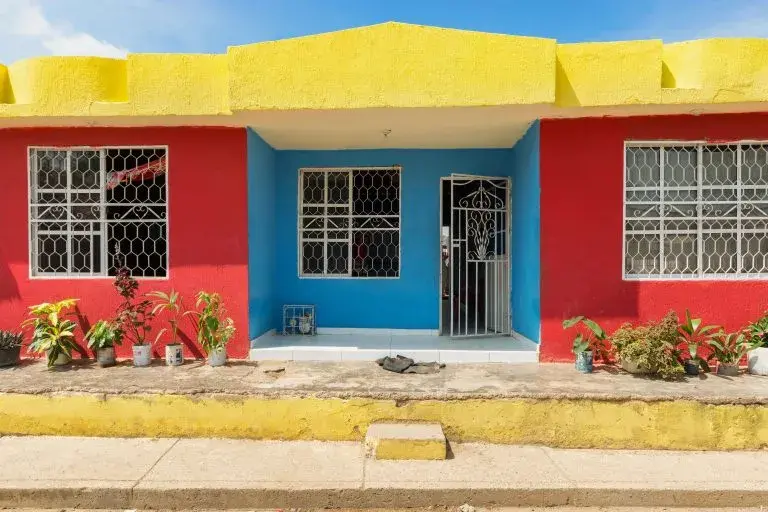
Thousands of tourists walk the colonial streets of Cartagena. Alongside them go, bursting with joy and color, beautiful women dressed in skirts, shawls on their shoulders, and turbans wrapped around their heads. Weathered by the heat and their daily walks, they carry out their itinerary offering the products they skillfully display. They sing their calls while a basin, filled with fruits or traditional sweets, balances on their heads. These are the famous palenqueras. Their famous sweets include corn and panela honey treats called alegrías, tamarind or peanut balls, papaya and cinnamon sticks, enyucados with coconut, cheese and anise, and cocadas.
The palenqueras are not found only in Cartagena. They travel the region sharing their recipes, which have lasted more than three centuries. Besides the typical sweets, it’s worth tasting any culinary preparation. Their tradition has handed down an incomparable flavor, famous for dishes such as catfish mote, the traditional cheese mote of the Caribbean region, seafood rice, smoked catfish celele, chichas, and majuana, made with cassava, panela, pigeon peas, and coconut milk. Delicacies that, when tasted, turn you into a herald of the phrase "Minino a Palengue a kumé", which in Palenquero to Spanish translates as “Come to Palenque to eat”.
Palenquera cuisine for the world

The authenticity of the place is reflected in its language and gastronomy, internationally awarded at the Gourmand World Cookbook Awards 2014, in Beijing, China. The contest had 15,000 cookbooks from illustrious personalities in the sector, from 184 countries. By fate, among them was ‘Kumina ri Palenge pa tó paraje’, a book written in San Basilio de Palenque, with ancestral recipes and instructions given in the Palenquero language. Thirty-eight palenqueros participated in its preparation, ready to share their recipes. In the end, they received the recognition considered the Oscar Award of gastronomy.
A language spoken only in Colombia
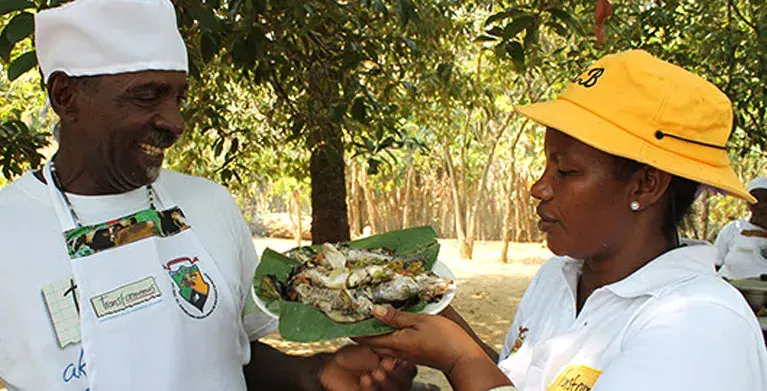
On European ships were captives from different African regions and cultures. A colonization strategy so that those confined on ships and workplaces could not communicate, thus preventing mutinies or escape plans. Contrary to expectations, these tribes mixed a bit of Spanish, Portuguese, English, French, and the African Bantu and Pingui languages to create their Palenquero language. Only they understood that complex system of messages that still persists and is spoken in San Basilio de Palenque today. This is one of the 69 native languages currently existing in Colombia.
The Palenquero language, shared in all the palenques of the time and native to African communities in America, today exists and is spoken only in Colombia, thanks to the runaway slaves who fled Cartagena and founded San Basilio de Palenque. Even there, in the Walled City, 60 kilometers from the place, the palenqueras who roam the streets selling their products speak their own language; an exceptional language of incalculable value to Colombian culture.
The flavor of Colombia
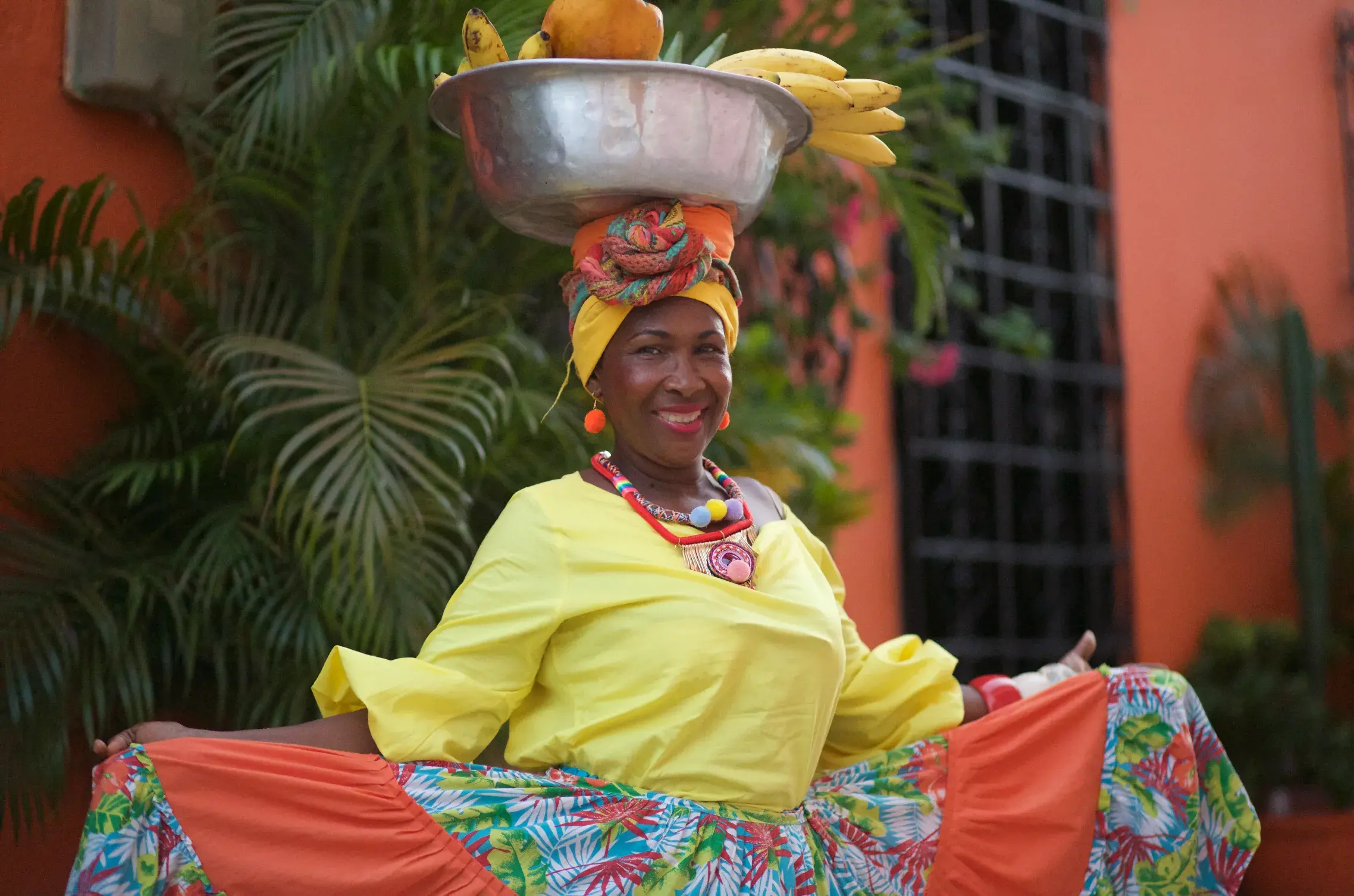
Drums resound everywhere and dancers make the ground vibrate. The hearts of spectators beat stronger, rewarded by the evocations produced by rhythms and songs. There the African musical influence on national rhythms is evident, marked by the captivating percussion in expressions such as puya, son, pava, and mapalé. Any event, any occasion, even death, is accompanied by a drum. Music and dance are everywhere. It seems like they celebrate every day in the name of freedom.
In San Basilio de Palenque, joy is contagious. Their costumes and strength in dancing are displayed in el entrompao, el pa raíto or paseo, son palenquero, chalusonga, and champeta. Everywhere resonate the compositions of Sexteto Tabalá, Kombilesa Mi, Radio Matuna, Las Alegres Ambulancias, and Son Palenque. Tourists witness the flavor, magic, and charm of expressions such as the "Bullerengue sentado", "Son del Negro", and "Son palenquero de Sexteto". To experience it firsthand, you can attend in October the Festival of Drums and Cultural Expressions of Palenque. A complete journey through its culture.
A unique society
A place without police, where crime does not exist. The community organizes itself in groups called ma-kuagro. A system of rights and duties commonly accepted, in which everyone looks out for the general welfare. The Cimarrona Guard works for the well-being of San Basilio de Palenque and the ma-kuagro manage local community affairs such as the “lumablú”. A nine-day funeral ceremony with songs, dances, and feasts in honor of a deceased person. In the streets, the ‘lecos’ of those who sing lamenting the departure are heard, and on the ninth day the ‘tambor pechiche’ resounds, giving the final farewell.
In the center of the main square stands the monument of the legendary Domingo Boikos Biohó. In the yards and courtyards, women braid the hair of their peers, just as centuries ago they did to draw escape maps or hide seeds before fleeing, hoping to plant them in a free place. Although registered as Cassiani, Salgado, or Cáceres, they still preserve their African names and surnames. The Ministry of Culture of Colombia declared the place a Property of National Cultural Interest.
Property of national and global interest
A little more than 50 km from the city of Cartagena de Indias, lies San Basilio de Palenque, a town of approximately 3,500 people. The birthplace of Antonio Cervantes and the brothers Ricardo and Prudencio Cardona, all world boxing champions. Home to notable figures such as the musician Rafael Cassiani Cassiani and Evaristo Márquez, the first Colombian to act in international cinema, alongside Marlon Brando.
We invite you to discover the magic of the place and enjoy the usual walks of this journey into the past, in this unique cultural space that is part of #LoMejorDeColombia.
 Welcome, you are in
Welcome, you are in 









